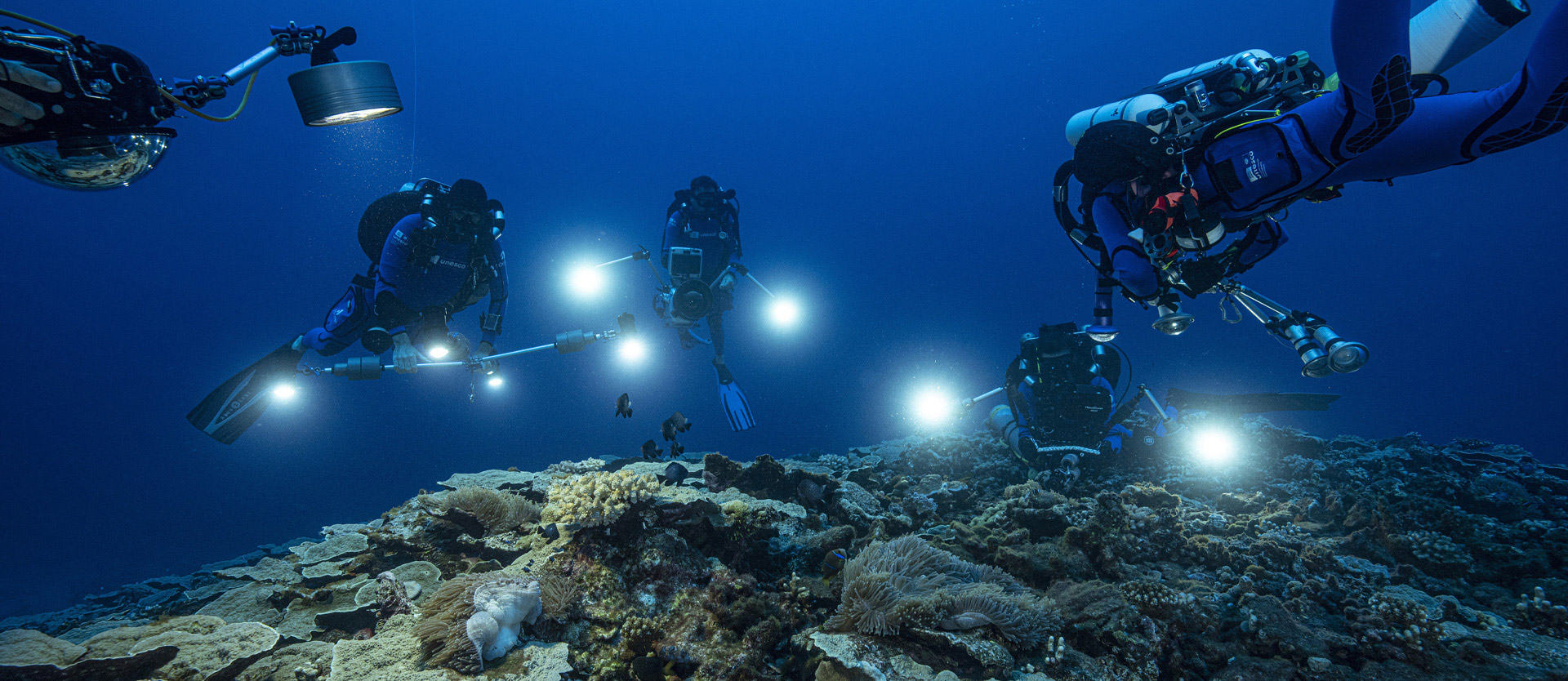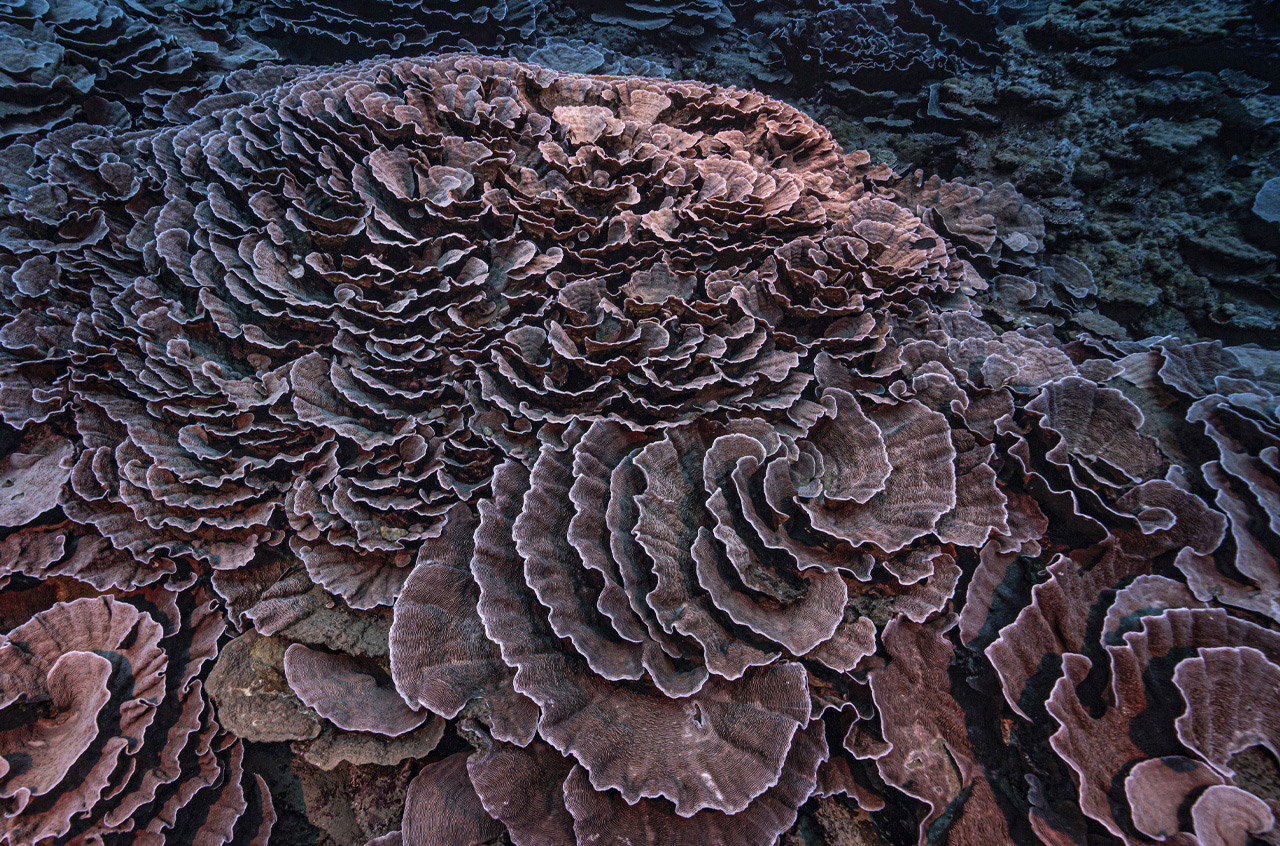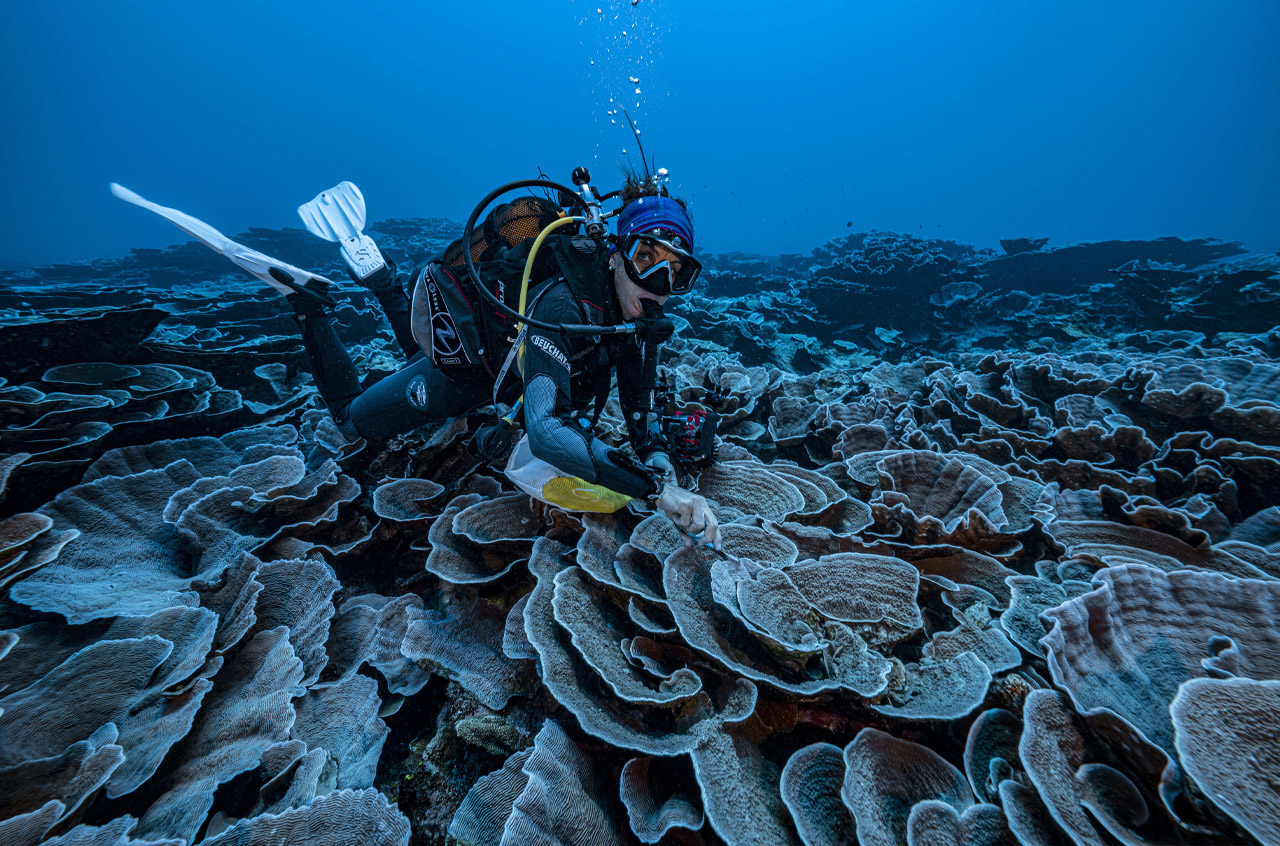
Corals in the twilight zone

For the divers, it must have been like walking in the Garden of Eden. Corals as far as the eye can see. Off the coast of Tahiti, at a depth of around 60 meters, they made a find. There, UNESCO researchers have discovered one of the largest coral reefs in the world. The rose-shaped corals that the expedition members came across are up to two meters in diameter. With a length of about three kilometers and a width of 30 to 60 meters, the newly discovered biotope is one of the most extensive, healthy coral reefs in the world.

"Like a work of art," says Alexis Rosenfeld, French photographer and founder of UNESCO's "1Ocean" campaign. He has documented the research mission with fascinating photos.
"It was magical to see these huge pink corals. It was like a work of art," says Alexis Rosenfeld, French photographer and founder of UNESCO's "1Ocean" campaign. Rosenfeld documented the research mission with fascinating photos.
The find is unusual because the vast majority of coral reefs lie at depths of around 25 meters. The discovery suggests that there are even more reefs at depths greater than 30 meters, in the so-called "twilight zone" of the ocean, the researchers believe.
In French Polynesia, significant bleaching, or coral die-off, occurred in 2019. The reef now discovered does not appear to have been affected. "The discovery of this reef in pristine condition is good news and can serve as motivation for future conservation efforts. We believe that deeper reefs are better protected from global warming," explains Dr. Laetitia Hedouin of the French National Center for Scientific Research (CNRS).

The team dove for about 200 hours to explore the reef.
Until now, few coral reefs have been studied at greater depths. However, thanks to new technologies, longer dives there are now possible. The team dove for about 200 hours to explore the reef. In the process, the researchers were even able to observe coral spawning.
The expedition is part of UNESCO's global approach to mapping the ocean. "So far, we know the surface of the moon better than the deep sea. Only 20 percent of the entire ocean floor has been mapped," says Audrey Azoulay, UNESCO director general. Coral reefs are an important food source for organisms. They provide protection from tsunamis and coastal erosion. Organisms living in the reefs can even be important for medical research.












